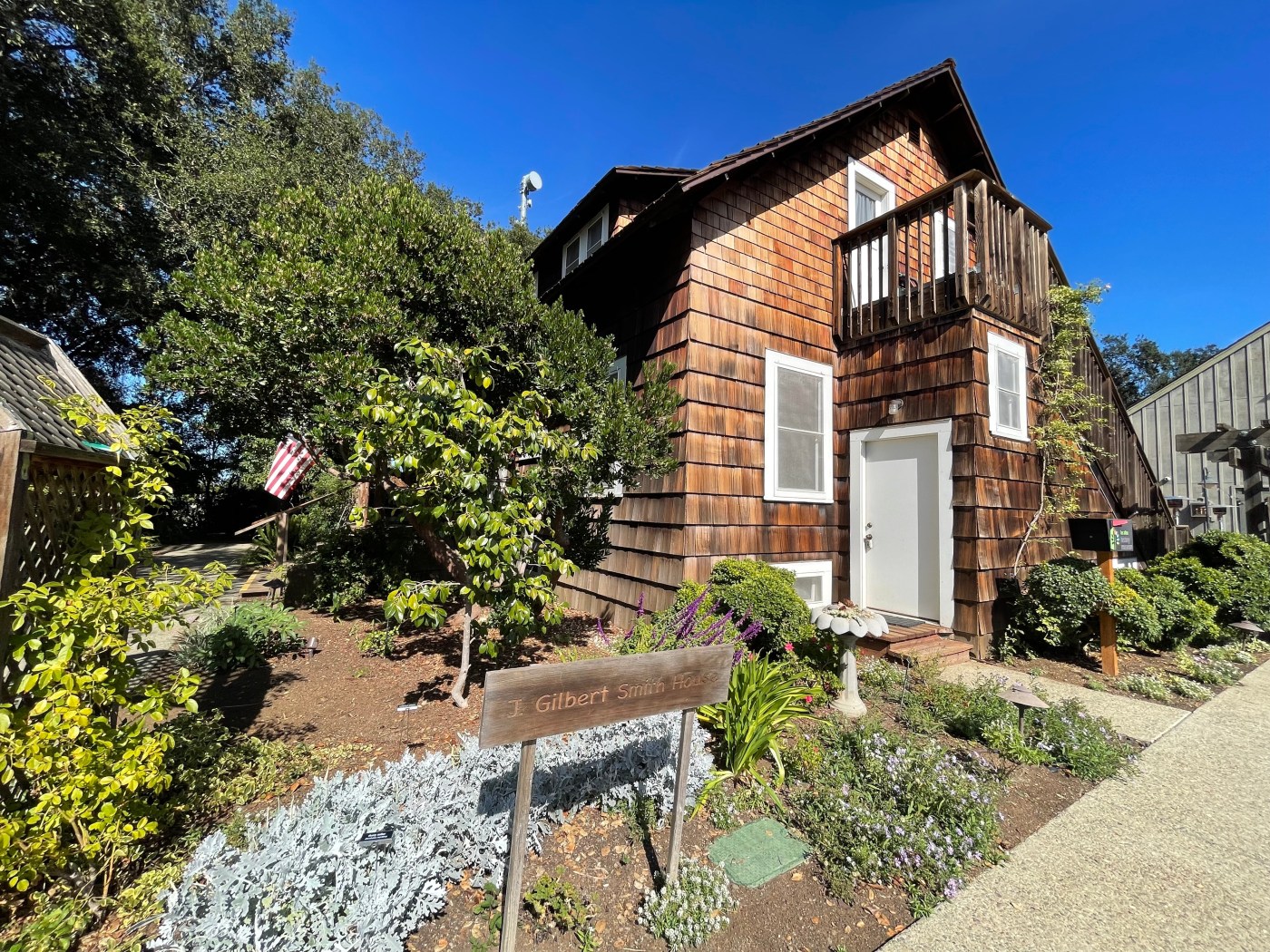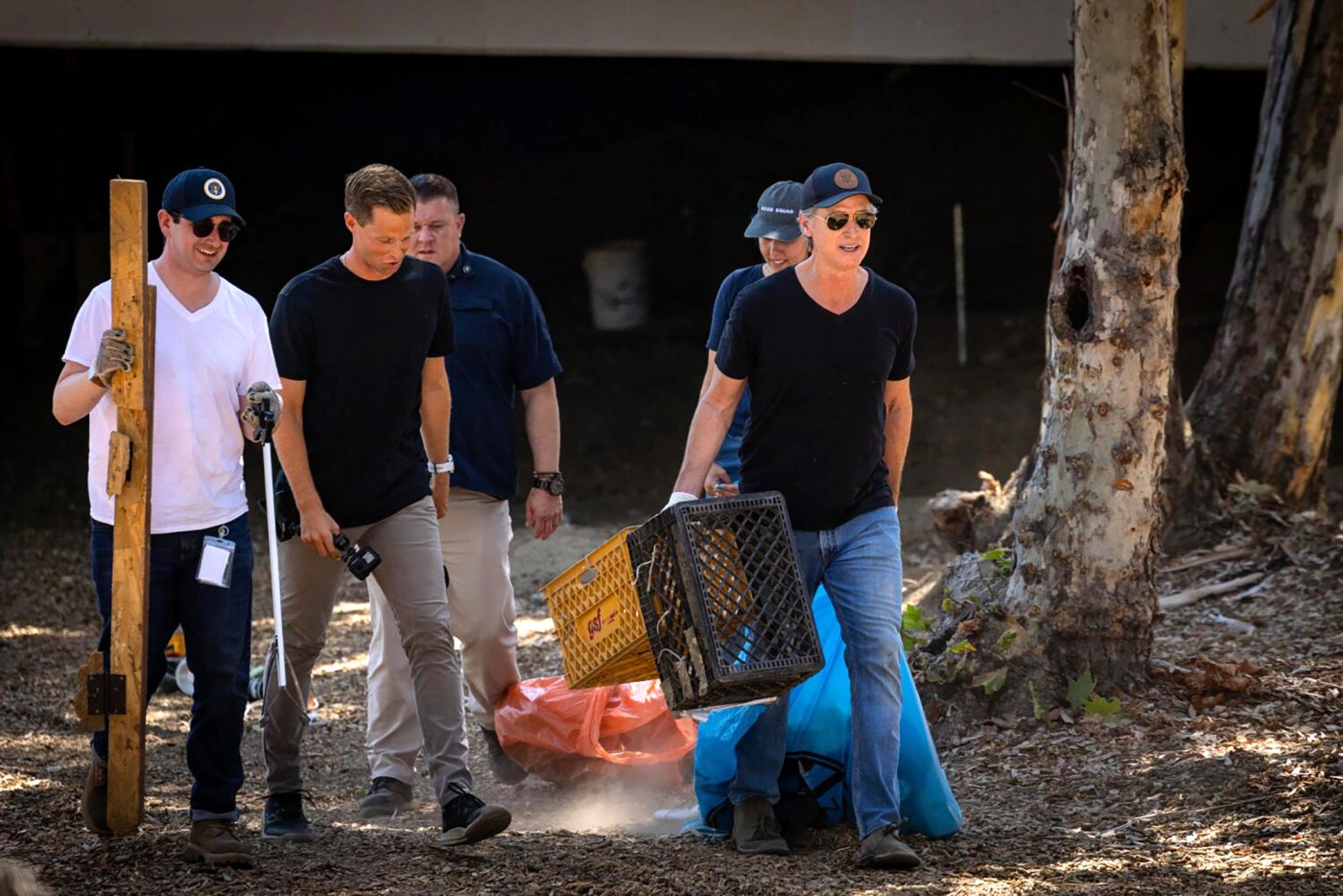If time travel were possible and you were zapped back more than a hundred years into the past in the Santa Clara Valley, chances are you may be on a train rolling into a commuter stop called Los Altos Depot. As your train barrels into the station, you may spot young men on bicycles going to work at a nearby fruit cannery, their lunch packs dangling from the handlebar. Just a 10 minute walk eastward from the station you’ll spot a Craftsman style house nestled in the middle of a sprawling apricot farm, designed and constructed by a carpenter called J. Gilbert Smith.
Related Articles
Muir Woods reopens temporarily with donor aid
In the ‘City of Souls,’ the living don’t fear the dead
Napa Valley’s Rutherford Hill offers ‘elevated’ wine tastings — literally
Escape to California’s largest wine country
Owners of Michelin-starred SingleThread to open bed-and-breakfast in Healdsburg
In 1901, when he was 25 years old, Smith bought five acres along the unpaved two-lane Giffin Road, “a little dirt lane” that snaked all the way from El Camino Real up to La Honda. Now called San Antonio Road, it was then used for redwood logging. Gilbert Smith pitched a tent on his property — “amidst the owl clover and California poppies” — while building a house and tank tower. Those structures still stand today, having survived one of the area’s worst earthquakes in 1906.
The cozy Smith bungalow is now a permanent historical exhibit at Los Altos History Museum. The Los Altos Heritage Orchard right by the museum is the oldest city-owned heritage orchard left in the Bay Area. Planted in 1901 by Smith, it was sold to the newly incorporated city of Los Altos in 1954 when architect Frank Lloyd Wright “urged city officials to incorporate the orchard in their design,” according to Robin Chapman’s book titled “California Apricots: The Lost Orchards of Silicon Valley.”
To build his home, J. Gilbert Smith selected the redwood — at the cost of $15 per 1,000 square feet — and it in creative ways: Along the porch are unfinished trunks that evoke the forest. (Kalpana Mohan for the Bay Area News Group)
Outside the Smith House you can see a palm that is supposedly a cousin of the trees that adorn Stanford University’s Palm Drive. Decorated and populated as a Depression-era residence, the Smith House is filled with many nostalgic surprises inside. Smith constructed his two-story home using redwood transported from the Santa Cruz Mountains. He personally selected the redwood boards — at the cost of $15 per 1,000 square feet — and used wood in the most creative ways. All along the porch are unfinished wooden trunks that evoke the forest as soon as we walk up to the house. Inside, we see the imaginative craftsmanship of a man who wore three hats, that of an architect, a designer and a carpenter, who conceived of hidden pocket doors, pull-out storage bins in the kitchen, a split stairwell and a built-in ironing board over a century ago.
A slew of curiosities also makes a visit to the place worthwhile for both adults and children alike. Every object from over a century ago begins a conversation: The darning egg in the living room, the circa 1880s square Steinway piano with its elaborately carved music desk, the radio that looks more like a jukebox, the treadle sewing machine with its adjustable mannequin and the myriad vanity objects on the dresser in the bedroom. There’s also an orchard office in the house (as it always used to be back in the day) with a typewriter, adding machine and a ledger on apricot sales. Outside in the garden, between the main museum and the Smith House, is a picnic spot; visitors can use the picnic tables and the surrounding grounds, which include the historic apricot orchard and large oak trees.
The J. Gilbert Smith House contains many conversation pieces like the circa 1880s square Steinway piano with its elaborately carved music desk. (Kalpana Mohan for the Bay Area News Group)
Along with the rest of Los Altos History Museum, the Smith House introduces us to the story of old Los Altos with its sweeping vistas, rolling hills and houses in the middle of vast apricot orchards. The Southern Pacific Railroad chugged through these lands, connecting San Francisco with San Jose and other towns. One canny real estate agent saw the advantage of locating a commuter city on that railroad line. Thus, the city of Los Altos was born.
Less than a century after Smith built his house, right around the year 1976, a young man raised in Los Altos by the name of Steve Jobs and his friend Steve Wozniak would assemble the first 50 Apple I computers at Jobs’ childhood home on 2066 Crist Drive. The late Jobs is supposed to have called Los Altos a “paradise” because of the apricot orchards, and he never forgot that ambience from his childhood. Today, the grounds at Apple Park in Cupertino, the corporate headquarters of Apple Inc., are home to over 9,000 trees, including apricot, apple, cherry and olive varieties, among many others; Jobs wished to bring back the rural environment and remember the legacy of the area before the disruption by Silicon Valley’s engineers and server farms.
Vintage telephones and furniture decorate the historic J. Gilbert Smith House in Los Altos. (Kalpana Mohan for the Bay Area News Group)
A glimmer of old Los Altos still reaches out to us today in the form of the permanent exhibit inside the Los Altos History Museum itself. On the first floor a train exhibit occupies a whole wall. We see how the Santa Cruz Mountains form a dramatic backdrop to all the township’s stores, evoking how the Santa Clara Valley looked at the turn of the last century. As we watch the setup behind the glass, it feels like we’re back in 1905, looking toward a future wonderland of immense possibilities.
A black steam engine vanishes into a tunnel on the left. In seconds, we see a small red streetcar roll to a stop; this interurban Peninsular Railway connected cities like San Jose, Palo Alto, Los Gatos and Saratoga. Minutes later, we watch the same black steam locomotive rumble back from the hills on the right into the Los Altos Depot of the Southern Pacific Railroad, a station that, over a hundred years later, is a restaurant called Bluestone Lane at what is now First Street. “All Aboard!” shouts a male voice over the din. The train trundles out of the station once more, bringing us back into the here and now of housing nightmares, IPO wishes and caviar dreams.
If you go: Los Altos History Museum
J. Gilbert Smith House: Open noon-4 p.m. Thursdays-Sundays, 51 S. San Antonio Road, Los Altos, free admission; losaltoshistory.org
Decorated as a Depression-era residence, the Smith House is filled with many nostalgic surprises. (Kalpana Mohan for the Bay Area News Group)





